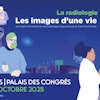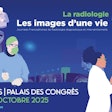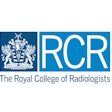
The development of an enterprise-wide imaging strategy is now a major priority for senior management within the U.K. National Health Service (NHS). As organizations battle to reduce diagnostic waiting times and accelerate patient access to treatment, U.K. radiology once again finds itself burdened with escalating pressures.
 Warren Edwards is general manager of McKesson Imaging and Workflow Solutions in the U.K. and the Republic of Ireland
Warren Edwards is general manager of McKesson Imaging and Workflow Solutions in the U.K. and the Republic of IrelandAccording to the Royal College of Radiologists (RCR), the number of MRI and CT scans performed in the U.K. in the past decade has grown by between 10% to 12% each year.1 At the same time, the number of trained radiologists in NHS trusts (hospital groups) has fallen to become one of the lowest, per capita, in developed European nations.1 The combination of increased demand and insufficient specialist resource is, in itself, having major implications for workflow and patient pathways in individual NHS organizations. But the wider impact on the cost, efficiency, and quality of patient care is being felt across the care continuum throughout local health economies. It's little wonder that the issue is focusing the minds of the executive office.
The RCR estimates in England alone the NHS currently has a shortfall of around 200 consultant (senior) interventional radiologists required to deliver standard five-day-a-week services.1 The prospect of delivering seven-day-a-week services is only bringing added anxiety -- not least because the limited availability of diagnostic imaging at weekends has been flagged by the government as a key area for improvement.
Yet despite the gathering storm clouds, there may be sunshine on the horizon. New technologies could provide a simple solution to the staffing, workflow, and quality issues that are creating radiology bottlenecks and stifling patient care. And so, as historical prime contracts with local service providers draw to a close and NHS organizations embark on a wave of radiology procurements, senior healthcare leaders are sensing the opportunity to effect meaningful change right across their local health economies. The most progressive are recognizing the important role that enterprise imaging solutions can play in helping them meet the challenges of delivering integrated care.
C-level view
The key drivers for radiology procurements have evolved considerably since the days of the National Program for IT (NPfIT). Historically, implementations were focused at the departmental level, with radiologists, cardiologists, and associated clinicians given budgetary autonomy to choose the systems they wanted. This naturally contributed to the NHS-wide problem of having disparate IT systems that did not talk to each other. And it created a silo culture that trust leadership teams are still trying to dismantle. Alongside this, CEOs are also under intense pressure to lower operating costs and increase operational productivity and efficiency. Interoperable systems and integrated data can be a vital mechanism in achieving these goals.
There is now widespread recognition that technology procurement can no longer remain a departmental decision. Therefore, as it becomes clear that connecting data across departmental boundaries can drive improvements to patient care, systems procurement has become firmly established as a board-level strategic decision with enterprise-wide considerations.
Gateway to a wider world
This is certainly the case with diagnostic imaging. Radiology is so often the patient gateway to the right treatment pathways, particularly in life-changing disease areas such as cancer, cardiology, and musculoskeletal disorders. But flaws in traditional methodologies have meant that vital radiology data may not follow the patient as they journey across the care pathway.
In many cases, even access to images and reports within NHS organizations is constrained by departmental walls. The impact on patient flow, escalation, diagnosis, and treatment can be severe. Managed poorly, radiology can regress from being a gateway to the appropriate pathway to being an inadvertent barrier to it.
Moreover, as "vanguard" sites take up their mandate to explore innovative models of integrated care, service delivery is expanding to cross-organizational boundaries. It's no longer enough to know what's going on inside your organization, there's a need to understand and connect with what's happening outside of it. This is forcing senior management to develop an enterprise-wide view of their operations and patient populations, where the "enterprise" stretches across entire local health economies.
Aboard the enterprise
So how can organizations remove historical obstacles that undermine radiology's position as the gateway to critical care? The answer may well depend on making the move to an enterprise imaging solution. Enterprise imaging solutions are not only aligned with national directives to develop integrated services, but they can also help individual organizations address the many pressures on radiology.
 In the Republic of Ireland, the National Integrated Medical Imaging System now connects 37 facilities and 50 hospitals using a single PACS and RIS database.
In the Republic of Ireland, the National Integrated Medical Imaging System now connects 37 facilities and 50 hospitals using a single PACS and RIS database.At present, the most common approach to the chronic shortage of radiologists is to outsource services to a private provider. The cost implications of outsourcing alone are significant -- but the approach also carries additional risks around quality. NHS organizations have no arbitration over the processes, capabilities, and quality of private providers, and the standards of clinical reporting are not being supplied. However, next generation enterprise imaging systems could offer a solution to the workforce problem.
Not only can they provide real-time access to images and reports to professionals across the health economy, irrespective of their clinical setting, but they also enable a platform for collaborative working across sites. This means that organizations can optimize resources across multiple settings, providing speedy access to available radiologists and helping to balance workload.
Such collaborative working can help maximize bandwidth. What's more, it helps accelerate care whilst at the same time maintaining quality control. The most effective enterprise systems include workflow tools that support the management of resources across organizational boundaries, providing a safe and reliable foundation for collaborative working. Moreover, the collaborative approach offers benefits of scale including greater buying power across the local health economy.
Quality gains and patient satisfaction
Although the journey toward collaborative working may well be an incremental one, proactive organizations are already exploring the opportunity of creating a region-wide enterprise environment. However, for trusts that aren't yet ready to take this route, enterprise imaging solutions still provide significant benefits for clinicians and patients alike. The best offer interoperability with existing systems to empower clinicians across the enterprise with ready access to key patient data. This not only supports clinical decision-making with up-to-date imaging and reports, but it helps improve patient/clinician interaction and helps accelerate treatment. Real-time access to data can help remove unnecessary delays, reduce the administrative burden on the NHS, and improve operational efficiency. Moreover, the associated gains free up clinicians to see more patients, further clearing the system. The impact on patient satisfaction and health outcomes can be profound.
In health economies that have already embraced the enterprise concept, the results -- like the images -- are there for all to see. For example, in the Republic of Ireland, the National Integrated Medical Imaging System now connects 37 facilities and 50 hospitals across the whole country using a single PACS and RIS database. It's revolutionized healthcare delivery and means that, irrespective of where they touch the health service, patients and clinicians have instant access to all their diagnostic images. The approach can easily translate to the NHS.
Altered images
The development of an enterprise-wide imaging strategy could help transform NHS organizations as they battle to adapt to a changing healthcare environment. To get there, healthcare leaders should consider collaborating with stakeholders from across their local health economy to develop a long-term approach that aligns with collective challenges, needs, and aspirations. Crucially, the best collaborations will be multidisciplinary and build on input from clinicians, technicians, and departmental leads, as well as trusted technology partners that have the experience and capability to custom-design solutions at scale and pace.
As health and care expectations change in line with societal and technological evolution, it may be time for the NHS to alter its approach to imaging. With the landscape set to be redrawn by the emergence of new integrated care models and a wave of radiology procurements, the opportunity to be enterprising is right in front of us.
Warren Edwards is general manager of McKesson Imaging and Workflow Solutions in the U.K. and Republic of Ireland. www.mckessonimaging.co.uk.
Reference
- The Royal College of Radiologists. How the next government can improve diagnosis and outcomes for patients. January 2015.
The comments and observations expressed herein do not necessarily reflect the opinions of AuntMinnieEurope.com, nor should they be construed as an endorsement or admonishment of any particular vendor, analyst, industry consultant, or consulting group.



















